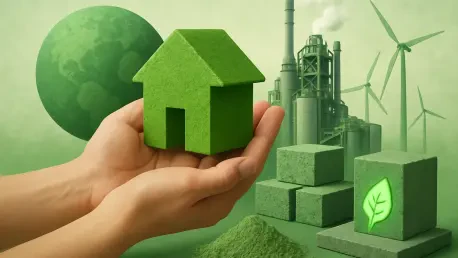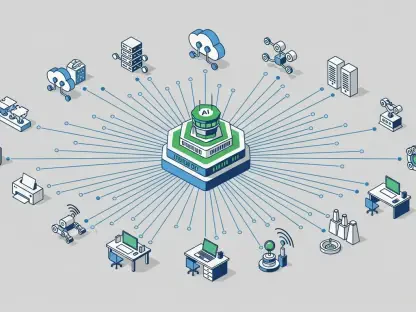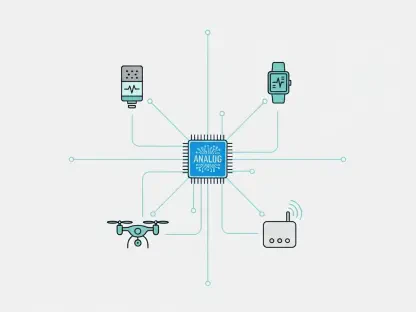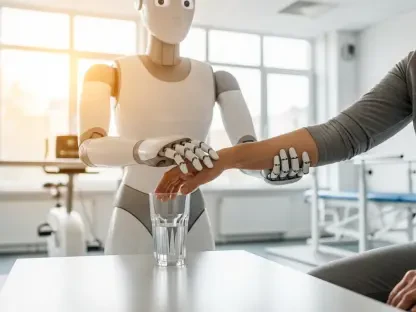In the global quest to combat climate change, the construction industry must address cement production, which contributes roughly 8% of worldwide CO2 emissions. Innovative strategies incorporating artificial intelligence (AI) offer promising paths to more sustainable cement solutions. This review delves into the intersection of AI and green cement technology, examining how groundbreaking research is reshaping traditional production methods toward an eco-conscious future―inspired by the pressing need to curb emissions without compromising material quality.
Context for Green Cement Innovation
Traditionally, the cement industry has relied heavily on clinker, a significant source of CO2 emissions during production. In response to this environmental challenge, research institutions such as the Paul Scherrer Institute (PSI) have pioneered AI-driven techniques to accelerate the development of sustainable cement alternatives. The industry must evolve to focus on reducing carbon footprints while maintaining the robustness and durability that cement provides in infrastructure projects worldwide.
Features and Performance of AI-Driven Cement
AI technology plays a central role in refining cement formulations by quickly analyzing vast datasets to optimize material compositions. Through machine learning, researchers can simulate numerous cement recipes, significantly reducing time-consuming laboratory experiments. AI models are equipped with neural networks capable of accurately predicting mechanical properties and potential CO2 emissions, ensuring formulations are optimized for both environmental and structural performance.
The use of alternative raw materials in these formulations defines the essence of green cement. Substituting clinker with industrial by-products such as slag and fly ash has shown promise. AI facilitates the identification of the appropriate proportions of these materials, maintaining performance standards while cutting emissions significantly. This technological integration highlights AI’s ability to not only foresee but also propose viable alterations that enhance sustainability.
Latest Developments and Innovations
Recent years have witnessed significant advancements in AI-driven green cement technology. Genetic algorithms, inspired by evolutionary biology, have enabled researchers to evaluate countless material combinations and select the most promising ones. By utilizing these techniques, PSI has introduced “digital cookbooks” for cement mixtures, forecasting mechanical stability and emissions impact well before practical application.
Shifts in consumer behavior and industry practices further influence the trajectory of this technology. Growing environmental awareness compels companies to seek out sustainable alternatives, prompting the adoption of AI-assisted methods for eco-friendly cement. These broader trends reflect a collective movement within the industry, highlighting AI’s potential to redefine construction material innovations.
Real-World Implementations
The implementation of AI-enhanced green cement spans across various sectors, from infrastructure projects to residential builds. Notable cases include bridges and high-rise structures where environmental sustainability is paramount. In these applications, AI-driven formulations meet the rigorous requirements for strength and durability, demonstrating the viability of green cement in real-world scenarios.
Moreover, some regions are using AI to adapt cement recipes based on local environmental conditions and resource availability. This adaptability underscores the technology’s ability to address diverse global challenges by tailoring solutions to specific geographic and ecological demands.
Challenges and Limitations
Despite its promise, AI-driven green cement faces notable challenges. Current technical hurdles include ensuring the widespread availability of alternative raw materials and integrating AI processes within existing manufacturing frameworks. Regulatory constraints and market readiness also affect the pace at which these innovations can be broadly applied.
Efforts to overcome these barriers are ongoing, with researchers focusing on refining algorithms and material acquisition processes. Continuous collaborations between technological, governmental, and industrial entities are essential to address these challenges and facilitate smoother transitions to sustainable practices.
Future Outlook
Looking ahead, AI-driven green cement technologies are poised for significant strides. Anticipated breakthroughs include the further refinement of machine learning models, offering even greater accuracy in predicting and formulating environmentally friendly cement alternatives. The integration of additional parameters, such as logistical considerations, is expected to enhance the effectiveness and adoption of these innovations.
As construction practices increasingly align with sustainability goals, AI-driven green cement stands to play a pivotal role in reducing the industry’s carbon footprint. The ongoing evolution of these technologies suggests a future where construction materials align closely with environmental preservation objectives, ushering in a new era of eco-friendly building solutions.
Conclusion
AI has emerged as a transformative force within the green cement sector, fostering innovative approaches that reconcile ecological responsibilities with the demands of modern construction. Progress in AI-driven material science has revolutionized traditional production methods by offering pathways to substantial CO2 reduction while preserving essential material properties. The deployment of such technologies, with their inherent flexibility and adaptability, evidenced potential to drive substantial improvements in industrial sustainability. Looking into the future, AI’s role in green cement development remains vital, with opportunities for further innovation and systemic change on the horizon, marking a critical step in addressing the global environmental impact of the construction industry.









